Are you an avid user of MacOS but feel held back because of the limitations of updates on your old Mac? This must be unsettling since macOS Monterey has been a game changer for Mac users around the globe. However, when there is a will, there is a way. To your surprise, there are still several ways you can install macOS Monterey on your unsupported Mac.
This article will provide detailed information about all the key points you need to remember while trying your luck. Continue reading and explore all the recent updates your friends and family have been raving about ever since.
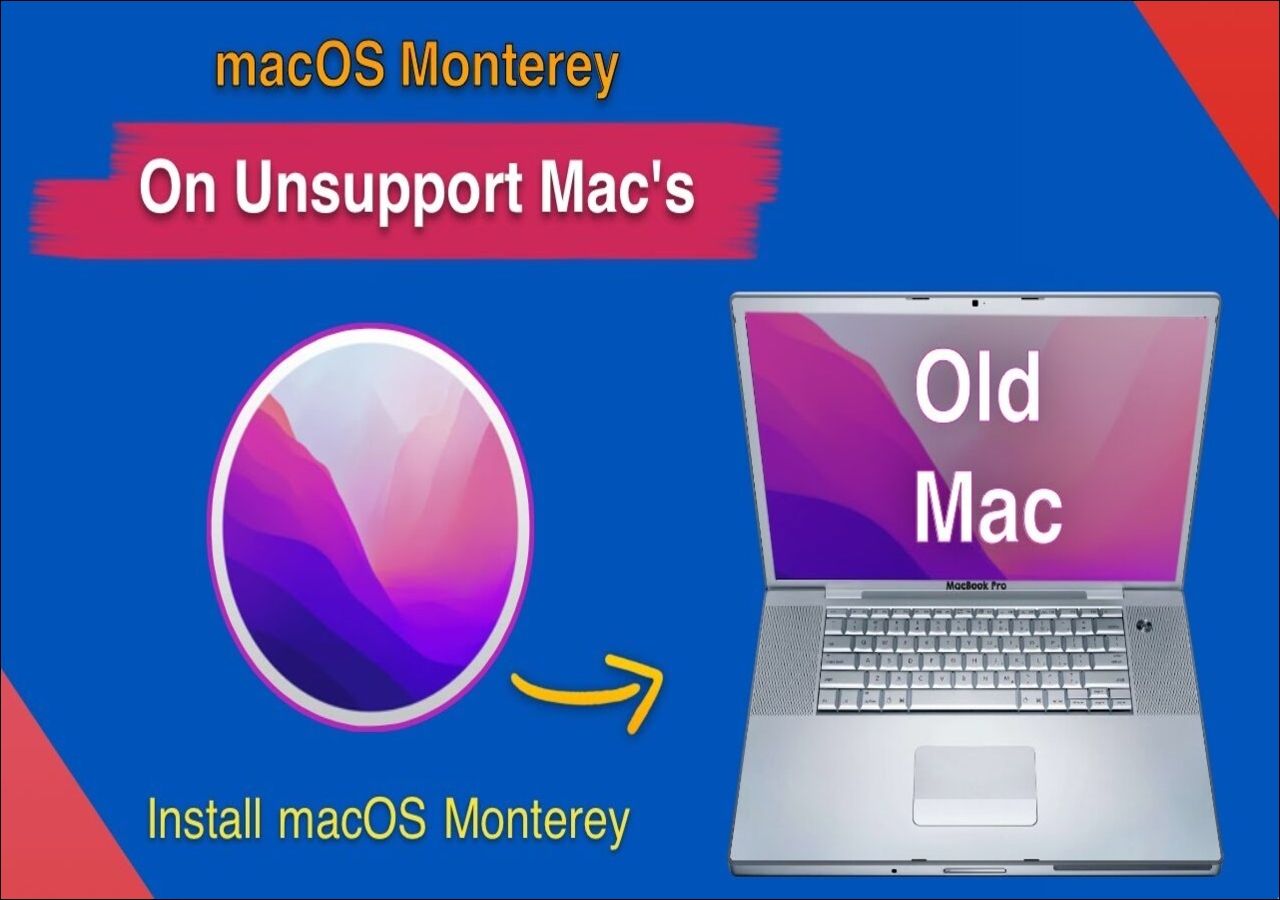
Can I Install macOS Monterey on an Unsupported Mac
Fortunately, contrary to conventional ideas, you can install macOS Monterey on an unsupported Mac and enjoy all the updates. It seems to open your eyes to a whole new world. Now the question arises, why should you have the hassle of installing it? What is the real magic in macOS Monterey? Don't worry. The points listed below will convince you to install macOS Monterey on your unsupported Mac and compel you to do so at the earliest.
- Access to the latest features. New ones are upgraded versions of previous ones. This means you can now leverage them more efficiently, and who knows which one helps you do better?
- As mentioned, new features like the Do Not Disturb mode improve productivity and focus. Not to forget; the blockbuster feature of Apple Universal Control, which revolutionizes connecting all your Mac devices quickly.
- Rev up your communication with friends and family using faster and updated features in macOS Monterey for Facetime and videos. Capture, record, and create like a king.
We have talked enough about macOS Monterey's good aspects. Let us determine if we can install the version directly or take another road. Suppose your Macbook falls in the list of the given names. It would be best if you struggled a little, but we have covered you. Let's find out.
- iMac (Mid 2007, after upgrading the CPU)
- Xserve (Early 2008 or newer)
- Mac Pro (Early 2008 or newer)
- iMac (Early 2008 or newer)
- MacBook Pro (Early 2008 or newer
- MacBook (Early 2008 or newer)
- iMac Pro (2017)
- Mac Studio (2022)
If your MacBook's model lies in the list mentioned above, you can still have all the perks just by using it differently. Are you ready to find out? Here is a video demonstrating how to install macOS on an unsupported Mac.
- 03:53: Firstly, learn how to install OpenCore Legacy Patcher on your device.
- 06:46: Take a USB drive and prepare it by erasing data; out from where you can access the System Restore without booting your PC.
- 08:40: Learn how to install the macOS installer using OpenCore Legacy Patcher. Boot up your Windows 11/10 PC into Troubleshoot Utilities.
- 10:36: Afterwards, figure out how to install OCLP to your plugged-in USB drive. Now move ahead with completing it.
How To Install macOS Monterey on Unsupported Mac
Although it might take some extra time compared to downloading it on a supported Mac, you can also ace it with the right set of efforts for an unsupported device. Keep reading to learn about 4 simple ways to install macOS Monterey On your Unsupported Mac.
To prevent the inconvenience of losing important data, it is recommended that you back up your important files via the EaseUS Data Recovery Wizard for Mac before installing macOS.

Back Up Your Mac and Never Lose Data
Back up and restore your MacBook/iMac without Time Machine, iCloud, or external hard drives.
The useful program also includes the macOS Installer, a free utility that might help you create a USB installer for macOS Monterey on unsupported Mac.
Step 1. Select macOS installer
Launch EaseUS Data Recovery Wizard for Mac and click "macOS Installer" on the left side. In tab 1, unfold the macOS version list by clicking "Select macOS intaller". You can also select "Refresh" button after downloading the macOS installer from App Store.
You can download macOS installer to upgrade or downgrade macOS, and you can find all the available versions, no matter the latest or older versions. Morever, you can apply macOS installer to dual boot Mac and run two macOS together.
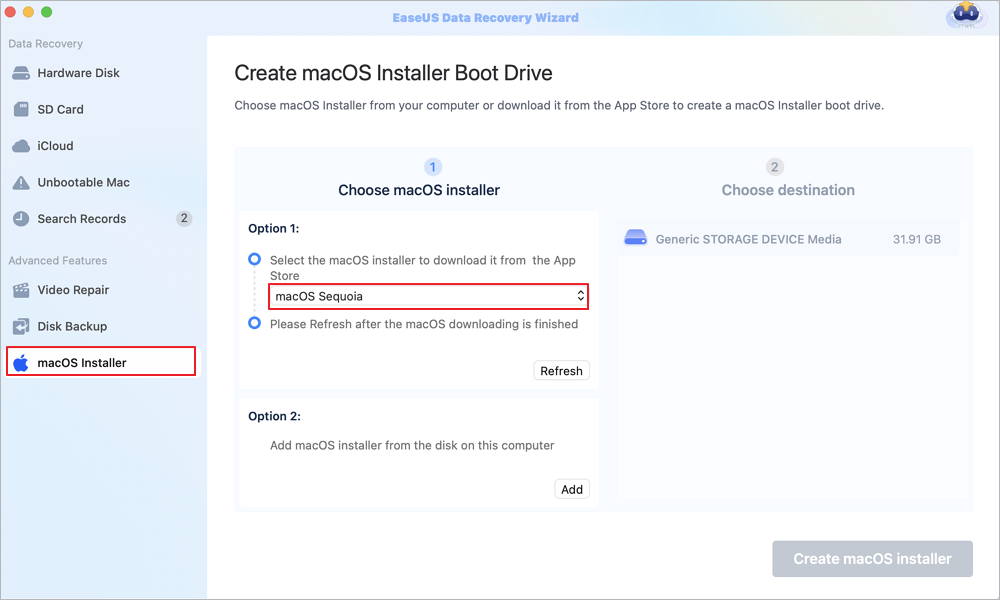
Step 2. Format the USB flash drive
Connect a USB flash drive (larger than 16 GB) to the Mac as your macOS boot drive. Choose the USB drive you prepared in tab 2 and click the "Erase and create" option in the pop-up window to format your USB flash drive. Then click the "Create macOS installer" button to start the creating.
- Important: This progress will delete all data on your USB flash drive, please back up the data before, or use EaseUS data recovery software to recover your data.
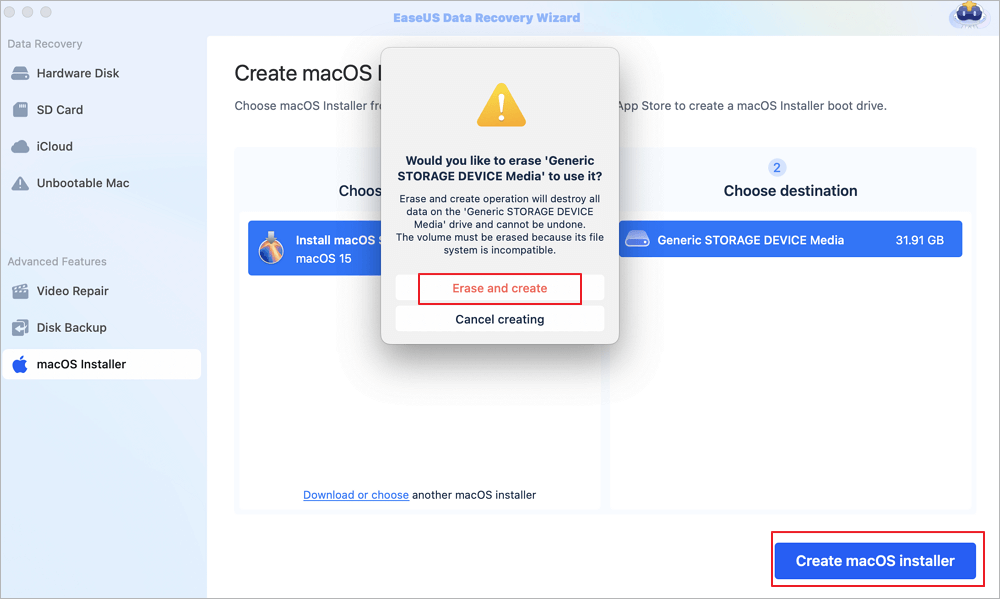
Step 3. Create the macOS installer boot drive
Click the "Finish" button after the macOS installer creating is finished. Follow the prompts on the interface to perform subsequent installation operations.
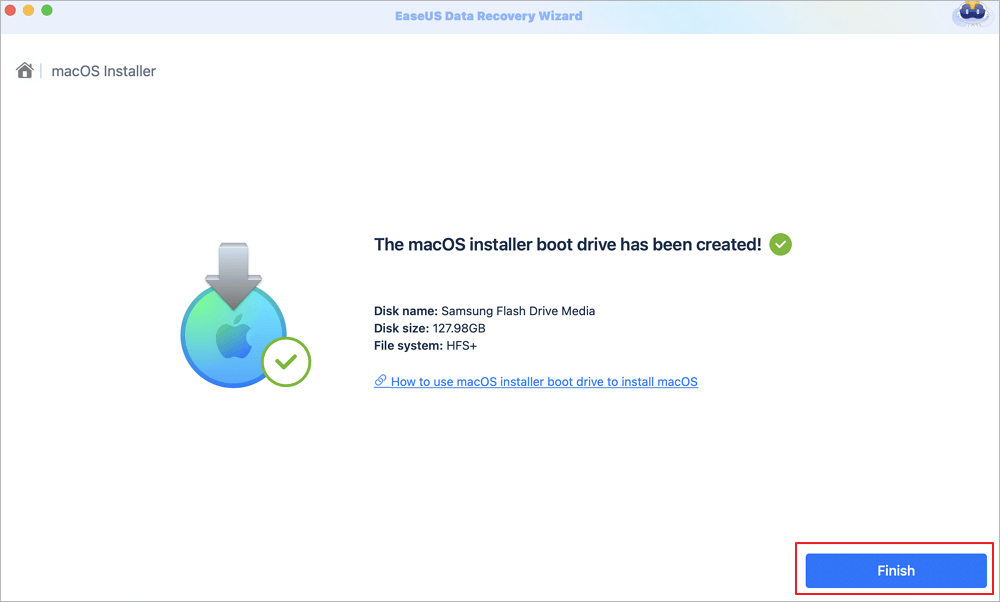
Step 1. Learn How to Download macOS Monterey Resource
The first step for updating macOS Monterey on your device is downloading it. It does not take much time, like setting up other installers, but is a basic prerequisite. Wondering how to download MacOS Monterey resources? Don’t worry. Please keep reading to equip yourself with enough knowledge about it all.
There are two basic methods to download macOS Monterey. Let's discuss them in detail.
Method 1: Download macOS Monterey From the App Store
The first method is directly accessing the App Store and downloading the macOS Monterey.
Step 1. Go to App Store and type ''macOS Monterey" in the search bar.
Step 2. Find it from the results. Then tap the "Get" button, confirm your Apple ID, and download macOS Monterey.
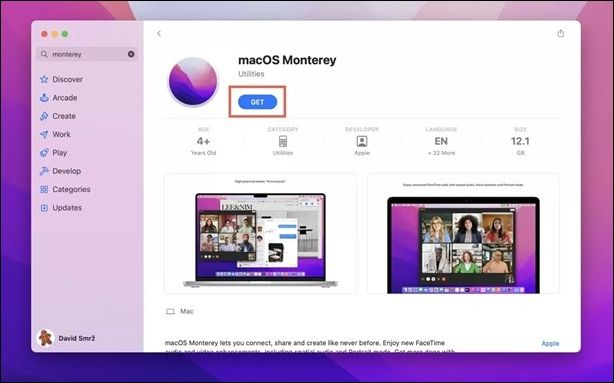
Method 2: Download macOS Monterey From Third-party Sources
The second approach revolves around using third-party resources. In this method, sites like AppleInsider, Techspot, and MacRumors can be your savior. Look out for any possible bugs before installing your macOS Monterey.
Step 2. Prepare a USB to Install macOS Monterey on Unsupported Mac
After finishing the macOS Monterey download, we will prepare a USB for installing it on an unsupported Mac. One of the critical requisites is having a space of a minimum of 16 GB in your USB drive.
Here are two easy ways of preparing your USB stick for installing macOS Monterey.
Method 1: Prepare Your USB Via Disk Utility
Step 1. Attach or plug in the USB to your Macbook.
Step 2. Open the Disk Utility menu on your Mac.
Step 3. Find and select your USB. Then, click the "Erase" button from the multiple icons at the top of the window. Find solutions to solve the prompt that can't erase the USB Drive on Mac.

Pro-tip: You must check whether Mac OS Extended (Journaled) is selected.
Step 4. Write a name for your USB. You can name it after your pet or something you like so you can remember it on the go. Finally, click the "Erase" button, and your USB is ready to function.

Method 2: Prepare Your USB Via Terminal
The other approach is more user-friendly. It involves using a feature termed 'Terminal' on your Macbook.
Step 1. Open the Launchpad icon in the Dock, then search for the Terminal and open it.

Step 2. Then, in the Terminal window, copy and paste the command which works best for the current version of your Macbook. Your command is this mentioned below:
sudo /Applications/Install\ macOS\ Monterey. app/Contents/Resources/createinstallmedia --volume /Volumes/YOURUSBDRIVE --nointeraction.
Step 3. Enter the Return key, and add your password. Before booting the drive, name it by opening the disk utility of your MacBook. Also, remember to rename the Myvolume option of the command with your selected username.
Note: Type Y and tap the return key to delete all the USB drive information.
Step 4. The Terminal will erase the data in the drive, and your bootable USB is ready.
Share this article on social media to read it anytime.
Step 3. Create a macOS Monterey Bootable Installer with OpenCore
Now that our USB is all booted, we have downloaded the macOS Monterey. Let's create an installer with OpenCore Legacy Patcher.
Step 1. First, you have to download the OpenCore Legacy Patcher. After doing so, open it and access the "Create macOS Installer" option.
Step 2. Once you see a pop-up window, click the Download macOS installer option and select the version you want to download.
Quick Tip: Opt for the non-beta version to download it from the list of macOS versions shown on the screen.

Step 3. Add your username and credentials to InstallAssistant once the macOS Monterey is downloaded.
Step 4. Install macOS Monterey by tapping on the Flash Installer button. Click on the USB drive you plugged in and wait for the Success message to appear on the screen.
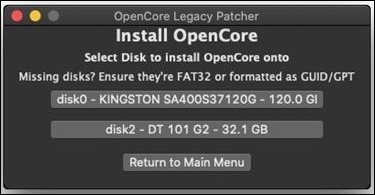
Step 5. Run the OpenCore Legacy Patcher, and go for the Build and Install OpenCore option. Tap on Build OpenCore.
Step 6. Then click Install OpenCore in the "Build and Install OpenCore window".
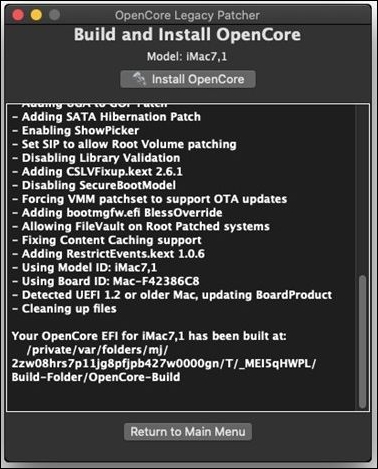
Step 7. Tap on the USB drive you've plugged in and select the partition with EFI letters. Wait for the message "OpenCore transfer complete" to finish the process.
Step 4. Install and Boot macOS Monterey on Unsupported Mac
The last step is installing the macOS Monterey and booting it on your device.
Step 1. Plug the USB drive you prepared in the previous step into your MacBook. Then restart your Macbook.
Step 2. Doing so will display a few options; click on the EFI boot (with the OpenCore icon).
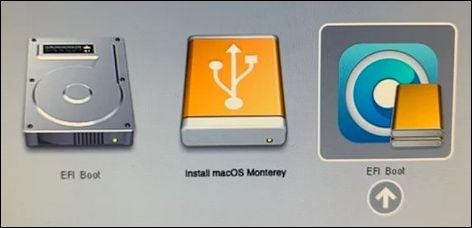
Step 3. Then tap on Install macOS Monterey on the next screen. After a while, it will be installed, and you are all set to use the new macOS.
Keep Data Safe When Running macOS Monterey on Unsupported Mac
Installing macOS Monterey on an unsupported Macbook seems fun, but it can also be bad news if it damages your data. When accessing and using third-party resources, your data might corrupt your important files/data. This may be troublesome since so many important files and documents are saved on one's device. When you can't find critical data on Mac, you should try to recover them with professional data recovery software, and EaseUS Data Recovery Wizard for Mac is your best choice.
We hope you can know more about this handy data recovery software after reading the following features:
- ?Recovering deleted files on Mac will be easy with the EaseUS recovery tool, which can also perform Mac Trash recovery.
- ?️Use it to recover deleted iMessage on Mac, and retrieve deleted videos, images, documents, audio, etc.
- ?️Recover lost files when encountering malware attacks, system crashes, accidental formatting, and other situations.
If you have downloaded this Mac data recovery tool, follow the written tutorial to keep data safe when running macOS Monterey on an unsupported Mac. We have added operation screenshots also to make you easily understand:
Step 1. Select the drive to be scanned
In the main EaseUS Data Recovery Wizard window, there will be a list of the drives connected to your Mac. Select the drive you need to recover lost/deleted files from, and click the "Search for lost files" button.

Step 2. Select your lost data/files
EaseUS Data Recovery Wizard for Mac will immediately scan your selected disk volume and display the scanning results on the left pane. You can sort the results to find the wanted files if you are looking for certain files.

Step 3. Recover lost/deleted data
Once you have found the desired files, preview the files and then click "Recover" to begin the recovery of your deleted/lost Mac files.

Conclusion
Having an old and outdated MacBook should not be a reason to restrain you from optimizing your device usage. In current times of revolution, research and implementation play the role of a lifesaver. The article contains all the necessary information to ease the process for you. Keep going because being unable to afford a new device or other possible hurdles should not hamper you from playing with the recent update. Instead, find a route like the ones mentioned above. Keep your fear of losing your precious data aside since EaseUS won't leave your side with its upgraded features of saving and taking care of your precious data.
Install macOS Monterey on Unsupported Mac FAQs
If you have further questions, please review the ones listed below. If a query remains unsolved, don't forget to leave it in the comments.
1. How to install macOS Ventura on an unsupported Mac?
Installing Venture like Monterey might take a while, but these steps will guide you enough to install macOS Ventura on an unsupported Mac.
Step 1. The first is getting the macOS venture installer. Then grab a USB to prepare it for installing Venture. Get going by accessing a patcher.
Step 2. After a successful download, runs the open-core patcher app and click on Build OpenCore.
Step 3. Once done, click on Install OpenCore to USB/internal drive from the options.
Step 4. Then reboot your device by restarting it; multiple options will appear on the screen, and choose EFI boot. This ends in loading open core; click on install macOS venture by choosing it from the options shown in the open core picker. The installation was a success.
2. Can I run macOS Monterey on my old MacBook?
Depending on your model number and year, you can run macOS Monterey on your old Mac book. If it's incompatible with macOS Monterey, you must run a few steps to reach your goal.
3. How much RAM does macOS Monterey need?
If you want to install macOS Monterey on your Mac, it needs at least 16 GB of RAM to function well.
4. How to create macOS Monterey bootable USB?
There are two quick ways to make a USB drive bootable. The conventional one is plugging in your USB and erasing data after naming it by keeping the macOS extension in the loop. At the same time, using the terminal option available on your device is more convenient.
Was This Page Helpful?
Jaden is one of the editors of EaseUS, who focuses on topics concerning PCs and Mac data recovery. Jaden is committed to enhancing professional IT knowledge and writing abilities. She is always keen on new and intelligent products.
Dany is an editor of EaseUS who lives and works in Chengdu, China. She focuses on writing articles about data recovery on Mac devices and PCs. She is devoted to improving her writing skills and enriching her professional knowledge. Dany also enjoys reading detective novels in her spare time.
Related Articles
-
Show Hidden Partition Using Command Prompt [100% Working Solutions]
![author icon]() Cici/2025-07-10
Cici/2025-07-10 -
Nintendo Switch SD Card Format: How to Format SD Card for Nintendo Switch
![author icon]() Cici/2025-07-04
Cici/2025-07-04 -
FIXED: PC Won't Boot to BIOS - 4 Ways Included
![author icon]() Jerry/2025-07-04
Jerry/2025-07-04 -
How to Fix 'Searching for Time Machine Backups' Forever on a Mac
![author icon]() Brithny/2025-09-17
Brithny/2025-09-17
EaseUS Data Recovery Services
EaseUS data recovery experts have uneaqualed expertise to repair disks/systems and salvage data from all devices like RAID, HDD, SSD, USB, etc.